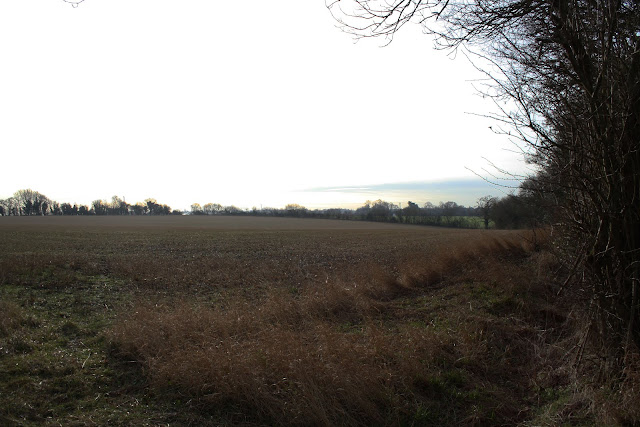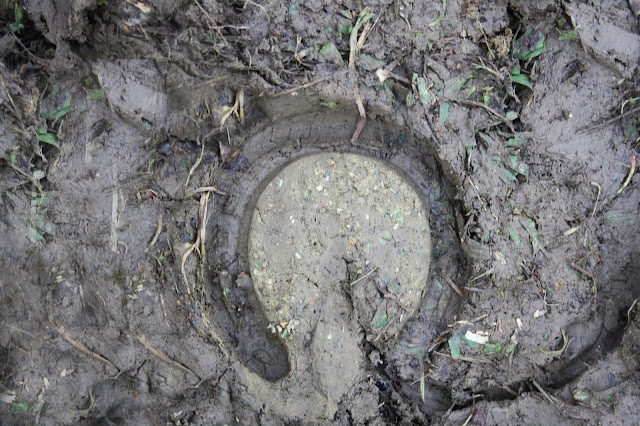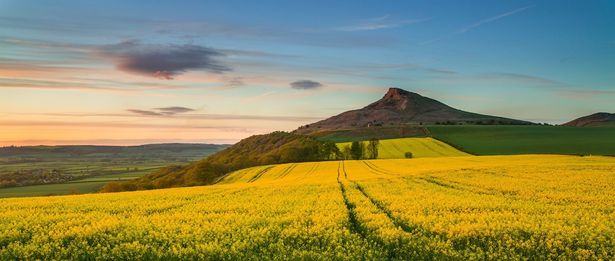Kate Watson - AS Photography Component 1
Thursday, 28 February 2019
Thursday, 31 January 2019
Final Evaluation
Final Evaluation
Here you will need to summarise how your work has developed as a result of the shoots and research that you have undertaken.
· How has your research influenced the images that you have created (name some influential artist that inspired you and explain their impact on your work).
· What new technical skills have you developed and how has this impacted on your work
o technical (learning new techniques in camera operation, shooting, studio lighting, compositional techniques, etc.)
· Has the way you take photographs changed/improved.
· In what way have you demonstrated your ability to experiment (computer experiments, physical experiments, etc.)
· Is your work is developing in a particular direction e.g. abstract, compositional, etc.)
· In what areas of your work were you most successful in what areas were you the least successful.
Through component 1 I have had a lot of inspiration using the Formal Elements and Photo Genres. The ones that have helped me the most are Lines, Colour, Tone, Form, and Landscape.
Using my research of Lines, this helped me to understand the importance of composition in a photo and how to manipulate the lines to create an interesting final image. I also learnt about how the different directions of the lines can influence the overall mood of the image, for example, horizontal lines can imply tranquility, peace and harmony, whilst vertical lines imply power and strength. The artist that helped me during my study of Lines was Peter Keetman. Whilst studying Lines, I came to the conclusion that I prefer the natural and organic style of photography instead of the hard, urban settings. I feel that this had an impact on my work as I preferred my nature photos much more than my urban ones. I think that this is because I took time to thing about the composition when out shooting, unlike my urban photos which I feel are rushed and aren't any good.
Using my research of Lines, this helped me to understand the importance of composition in a photo and how to manipulate the lines to create an interesting final image. I also learnt about how the different directions of the lines can influence the overall mood of the image, for example, horizontal lines can imply tranquility, peace and harmony, whilst vertical lines imply power and strength. The artist that helped me during my study of Lines was Peter Keetman. Whilst studying Lines, I came to the conclusion that I prefer the natural and organic style of photography instead of the hard, urban settings. I feel that this had an impact on my work as I preferred my nature photos much more than my urban ones. I think that this is because I took time to thing about the composition when out shooting, unlike my urban photos which I feel are rushed and aren't any good.
Whilst studying Tone, I researched Ansel Adams. Adams' work helped me to realise how important it is to have as many different tones in a single photograph in order to create a good and interesting image. This researched influenced me to take a bigger look at what I was photographing and look at how I could exploit the object to its max.
During the Photo Genres, I looked at portraiture, and although this wasn't my favourite it did give me a lot of insight to the equipment needed in the studio, and how to create mood and emotion in a still image. It also helped me to understand what effect different camera settings can have on an image. For the Low key shots a soft box was used to soften the light, filling the light in shadow areas. we also used a Snoot, which created a rim light effect. This was placed in front of the subject, opposite the Soft box. This controlled the light spill and keeps the light flowing in one direction. This gives off an emotional image
I feel that since I started Component 1 there is the odd shoot that didn't turn out how I wanted, however, I do feel like my photographs have improved in general. I think this is due to the fact that I understand my camera more and am familiar with how changing the camera settings can influence the final out come of the image.
I also feel that my images are made better by my ability to edit them using photoshop. Since starting Component 1 I have learnt how to use the 'quick selection tool', 'crop tool', 'the spot healing brush tool', 'the brush tool' and 'the clone stamp'. As well as adjusting the curves, levels and hues. I feel that I have got better at seeing what a photo needs to make it better and making the adjustments look as natural as possible.
Independent Shoot 1 - Photo Genres
Independent shoot 1 - Photo Genres
In this shoot I will be focusing on Landscape. Due to the winter weather, I want to focus on the frosty (or snowy!!). I will be looking at the trees, their winter colours and leaves as well as the hills and valleys in and around Hertfordshire and Essex.
Image bank
Research (of artists and techniques)
The artist that I have chosen to research for my Independent shoot 1 is James Ravilious. Black and white photography of rural life and landscape from the 1970's to 1990's - mainly taken in the west of England, but also in France, Italy, Ireland, Greece, and the English Lake District. Also rural life and landscape of the west of England in colour transparencies.
James' photos represent a sense of tranquility in the countryside. A lot of his photos are based on the farmers and animals that make up the rural areas of Countries.
 This photo above, conveys the farmers bond and dedication to his sheep on a cold, frosty, foggy morning.
This photo above, conveys the farmers bond and dedication to his sheep on a cold, frosty, foggy morning.
Contact sheet


Image bank
Research (of artists and techniques)
The artist that I have chosen to research for my Independent shoot 1 is James Ravilious. Black and white photography of rural life and landscape from the 1970's to 1990's - mainly taken in the west of England, but also in France, Italy, Ireland, Greece, and the English Lake District. Also rural life and landscape of the west of England in colour transparencies.
James' photos represent a sense of tranquility in the countryside. A lot of his photos are based on the farmers and animals that make up the rural areas of Countries.
 This photo above, conveys the farmers bond and dedication to his sheep on a cold, frosty, foggy morning.
This photo above, conveys the farmers bond and dedication to his sheep on a cold, frosty, foggy morning.
In this photo, the sloping hills in the background, with the sheep in the foreground, creates a tranquil and inviting setting of the countryside.
Contact sheet
Images that need editing
In all these photographs that I have taken, I have needed to edited the brightness and/or curves.
in the photo above i would ideally like to have focused in on the log pile more and remove the slight edge of the tree that is in the image. I think that this would make a better image overall.
My best images
AO1: Develop ideas through sustained and focused investigations informed by contextual and other sources,
demonstrating analytical and critical understanding.
I feel that the artist research was helpful in this study as it helped me to understand the theory on Documentary and made me look at a normal day to day setting in a new light, and made me look of objects that would make a good photo.
I feel that I have created good standard photographs using the techniques that James Ravilious used, however, I also feel that I put my style of photography into my work too. But, I do not think that my photographs would look good in black and white.
I feel that I have created good standard photographs using the techniques that James Ravilious used, however, I also feel that I put my style of photography into my work too. But, I do not think that my photographs would look good in black and white.
AO3: Record ideas, observations and insights relevant to intentions, reflecting critically on work and progress.
My idea for recording Landscape for my Independent shoot was to photograph the finer details in nature, and find how different objects, colours and settings can influence a photograph. I feel as though I was inspired by James Ravilious' work.
With reference to my best selected images: I feel that these images link to the topic and to the artist that I studied. All photos were taken using a tripod.
AO2: Explore and select appropriate resources, media, materials, techniques and processes, reviewing and refining ideas as work develops.
To take my photos I used a Canon E10 1000D, with multiple lenses. I had to adapt my camera settings to each particular shoot and setting as being in winter the weather can change rapidly along with the light.
Photo 1
Photo 2
Photo 3
Photo 4
Photo 5
Photo 1
Lens : EF-S18-250mm F/3.5-5.6
Exposure : 1/400 sec
F/ : 8
ISO : 400
Photo 2
Lens : EF-S18-250mm F/3.5-5.6
Exposure : 1/400 sec
F/ : 8
ISO : 400
Photo 3
Lens : Tamron 70-300mm f/4-5.6
Exposure : 1/400 sec
F/ : 8
ISO : 400
Photo 4
Lens : EF-S18-250mm F/3.5-5.6
Exposure : 1/400 sec
F/ : 8
ISO : 400
Photo 5
Lens : EF-S18-250mm F/3.5-5.6
Exposure : 1/400 sec
F/ : 8
ISO : 400
AO4: Present a personal and meaningful response that realises intentions and, where appropriate, makes connections between visual and other elements.
I believe that I have produced a strong series of images inspired by my research of Landscape and the images of James Ravilious. The final images produced were refined by developing the photo in photoshop using a range of techniques.


Thursday, 17 January 2019
Portfolio, Photo Genres
Portfolio, Photo Genres
Definitions
- A photographic portfolio is quite simply a collection of work. The common misconception is that it is required to be a 'best of' of all the work you've ever done. Although this can be true in some cases, it is more likely to be a series of work with a unifying theme, style or taken through a specific medium.
Aesthetic - refers to the principles of the nature and appreciation of beauty. Judging beauty and other aesthetic qualities of photographs is a highly subjective task.
Resolution - is the quality of the image. As the resolution goes up, the image becomes more clear. It becomes sharper, more defined, and more detailed as well.
Resolution - is the quality of the image. As the resolution goes up, the image becomes more clear. It becomes sharper, more defined, and more detailed as well.
What makes a good portfolio?
Subscribe to:
Comments (Atom)
-
Landscape Definitions and Theory Landscape- all the visible features of an area of land, often considered in terms of their aes...
-
Final Evaluation H ere you will need to summarise how your work has developed as a result of the shoots and research that you have unde...
-
Portfolio, Photo Genres Definitions Portfolio - An artist's portfolio is an edited collection of their best artwork intend...

































































